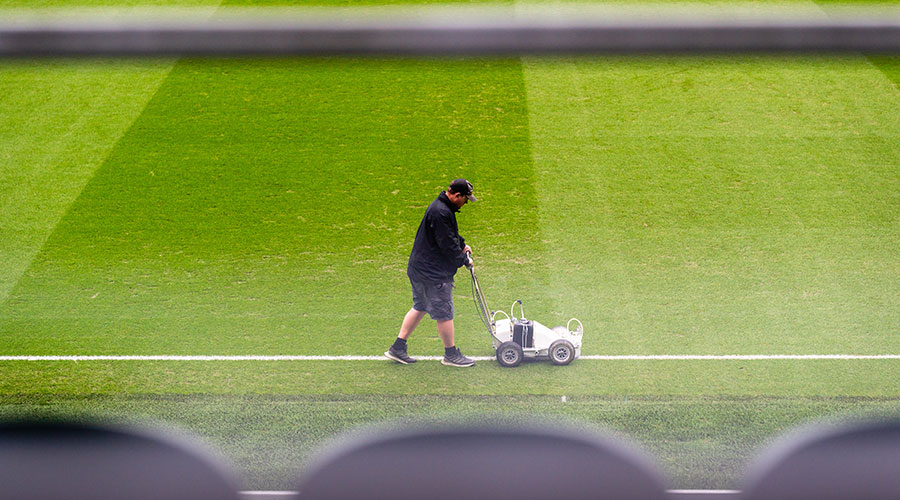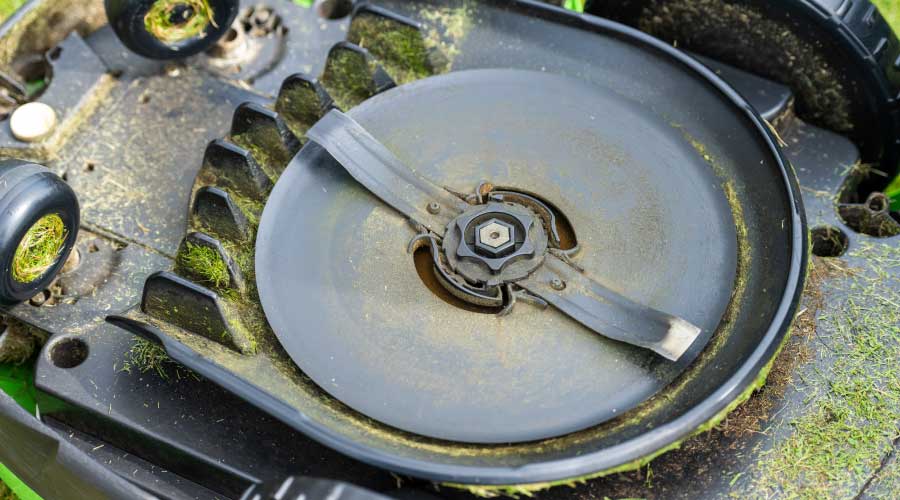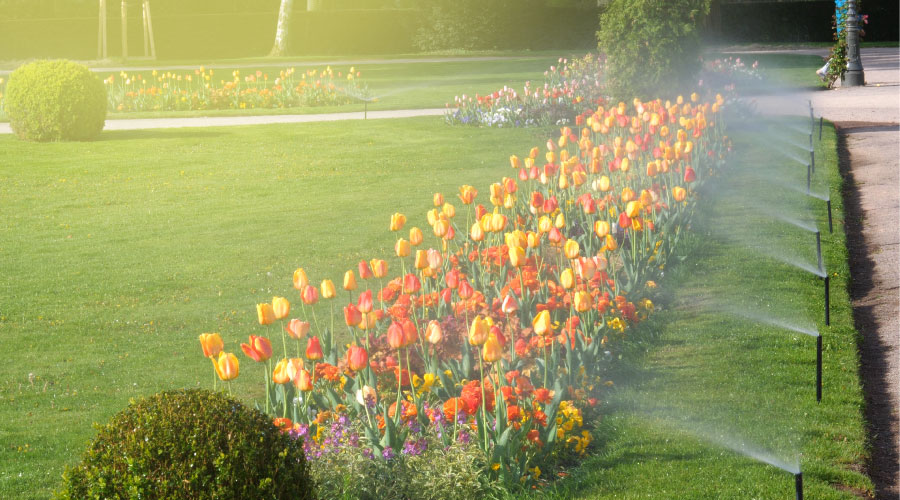Equipment Options to Maximize Mowers
Mowing decks, plow blades, brooms, and spreaders are among the attachments that expand the uses of big-ticket equipment
Grounds managers commit a great deal of time and money to specifying and purchasing large pieces of equipment for mowing turf areas. Operators and mechanics spend time and energy using the equipment and keeping it operating safely and efficiently.
A third avenue for managers looking to squeeze every dollar out of investments in mowers and tractors is the ever-growing selection of attachments for these pieces of equipment. From mowing decks, plow blades and spreaders to brooms, leaf blowers, vacuums and snow throwers, attachments offer managers additional power that, if applied correctly, can benefit both the organization’s image and its bottom line.
Making a List
The most desirable attachments are those that extend the use of a piece of equipment into seasons when it is not normally productive. For this reason, snow blowers and leaf vacuums are two of the most popular attachments.
“We have about 20 attachments, and almost all of them are aimed toward snow removal,” says Kevin O’Toole, director of the grounds services department at Villanova University. They include brooms, snow throwers, and plow blades.
The department’s equipment operators use eight pieces of mowing equipment to maintain the campus’s 220 acres, as well as its nearly 26 miles of sidewalks. Their reel mowers range from 48 inches all the way up to a 12-foot model.
Adding attachments can increase a department’s productivity, but managers also need to consider a department’s current equipment use to be sure this is the case. For example, when planning to add a leaf blower to a tractor that equipment operators normally uses to pull a mower, managers must make sure that mowing is not a critical operation that must be done at the same time as aeration.
Managers also should be careful when considering an attachment for a new or expanded grounds care task. First, they should determine the importance of that task. More than likely, if that task were truly important, the grounds care crew would be doing it already.
To specify attachments more efficiently, managers should a comprehensive list of department activities, along with the time each job requires. A second list should prioritize all activities the department would accomplish if it had the proper equipment and staffing. By comparing these lists to a roster of available equipment and attachments, managers can identify opportunities to increase worker productivity.
“There are so many attachments available,” O’Toole says. “Maybe I could use a particular attachment, but I can’t justify the investment.” As an example, O’Toole offers edgers. He has opted to purchase handheld edgers for his crews instead of larger, more expensive units that attach to mowers.
“I can’t see that they would be worth the investment,” he says. Among O’Toole’s criteria for an attachment is that it must be fully controllable from the cab. It also must be a heavy-duty piece of equipment.
“We’re often using these things 12 hours a day,” O’Toole says. “It’s not as though they get intermittent use. We don’t just use them for an hour and put them away.” O’Toole also advises managers to understand the additional load an attachment would place on existing equipment.
“Grading tools, for example, can put a lot of wear and tear on a mowing unit,” he says.
To keep track of attachment trends and advances in preparation for specification, O’Toole turns to three key sources of information: his grounds care crews, who work with equipment daily and often have brand preferences; his peers, especially those in professional associations, who are more than willing to share their experiences; and trade shows, which offer the opportunity to talk with numerous manufacturers in a short period of time and compare product offerings.
Making a Match
It is essential in the attachment-specification process that managers pay close attention to compatibility between attachments and the equipment that carries them. Manufacturers can guide managers in identifying attachments that can be adapted to a department’s existing mowers or tractors.
The issue can present challenges. Some attachments are particular to a specific model from a manufacturer, while others are compatible with several models from a manufacturer. Also, some attachments, such as aerators and spreaders, are universal, meaning they are compatible with most name-brand equipment.
Then there is the issue of compatibility with succeeding models from the same manufacturer, which can create unexpected additional costs.
“Most manufacturers have not been good about following through on the issue of compatibility between their models,” O’Toole says. In the case of most manufacturers, a change in mower models requires an entirely new set of attachments, so managers generally have to budget for that cost, as well.
“We complain about it, but it’s the nature of the business,” O’Toole says, and he concedes that some attachments generally should be replaced anyway after a few years of heavy use because they are near the end of their productive performance lives. Advances in safety and ease of use also make the additional investment worthwhile.
Managers’ attention to attachment specification also can go beyond simply what the piece of equipment allows operators to do.
“The type of attachments a piece of equipment uses is a strong consideration in specifying the base model mower,” O’Toole says. As an example, he points to the latest technology advance, a laser mower, which uses lasers to cut grass and usually is of interest to high-end landscape contractors.
“That’s a fantastic mowing machine, but that’s all it is,” he says. “You can’t use a blower with it to handle snow removal. It’s strictly for landscapers.” And with 26 miles of sidewalk, O’Toole needs equipment that can handle more than one task, most importantly snow removal.
Beyond the Purchase
Ensuring an attachment delivers the intended benefits to the organization goes beyond simply using it. Proper inspection and maintenance are vital components in its success.
When workers share equipment, it is easy for one to let others assume responsibility for routine maintenance and fixing breakdowns. To avoid scheduling conflicts, one person should take responsibility for the equipment, and anyone wanting to use it must check it out. Often, several workers share utility tractors, mowers and attachments. Departments should have guidelines for scheduling equipment use and maintenance.
“Maintenance is the number one responsibility with our operators,” O’Toole says. “They must be familiar with all the key points of the equipment.” If an operator finds a problem with an attachment that is beyond the basics, O’Toole says, he or she turns it over to the department’s central mechanic, who also are responsible for attachments’ seasonal maintenance and storage.
Finally, operators need proper training to install and remove the implements. If operators install an attachment only once per year and leave it on for the entire season, it might be more productive to train one person in the set-up for that piece of equipment.
A strategy that combines thorough research and specification with proper training, equipment use and maintenance stands a better chance of helping grounds department managers make product decisions that will benefit both their landscapes and their organizations.
Related Topics:











